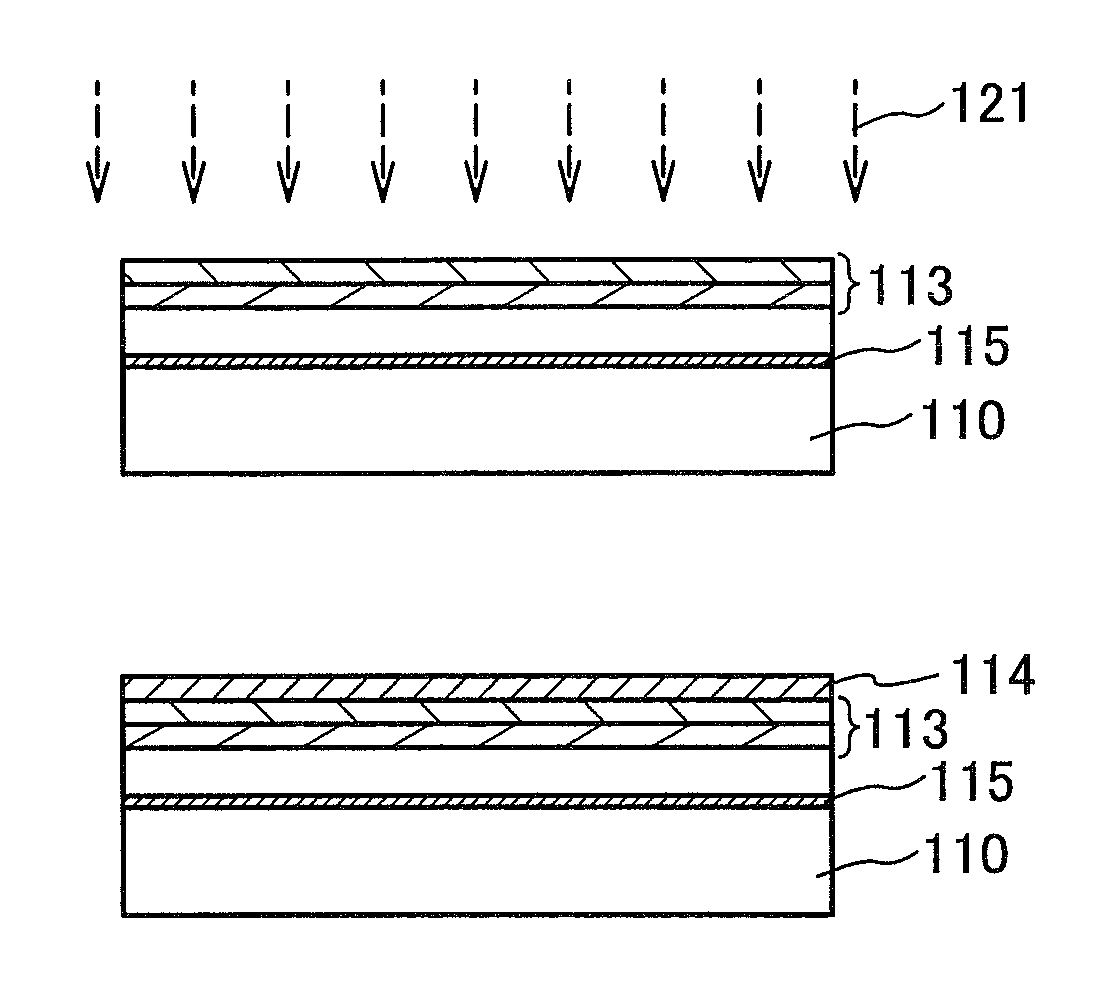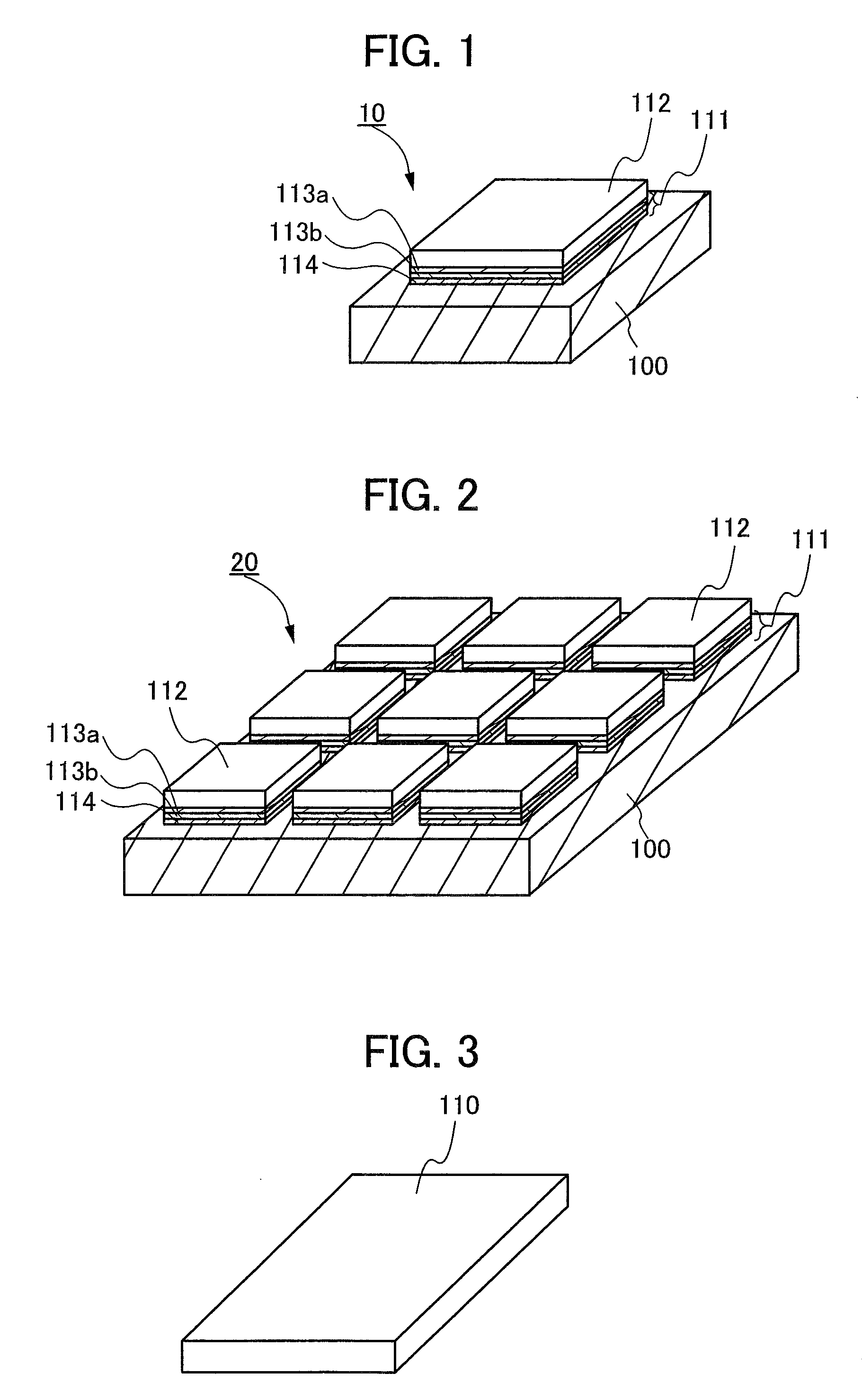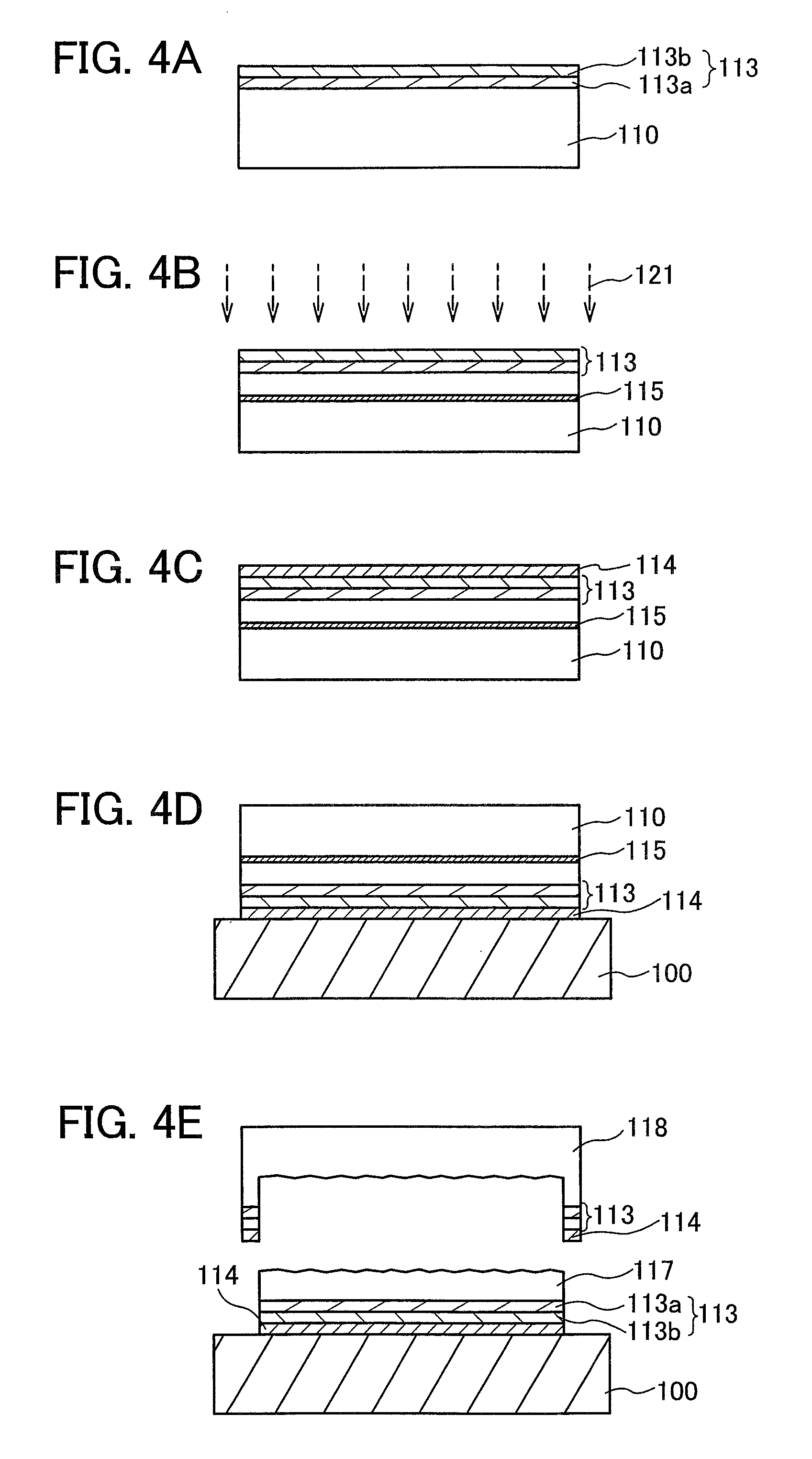Method for manufacturing semiconductor device
a semiconductor device and manufacturing technology, applied in the field of methods, can solve the problems of low heat resistance, glass substrate cannot be heated at a temperature which exceeds the upper temperature limit, process temperature limitations, etc., and achieve the effect of large area and crystallinity recovery
- Summary
- Abstract
- Description
- Claims
- Application Information
AI Technical Summary
Benefits of technology
Problems solved by technology
Method used
Image
Examples
embodiment mode 1
[0089]In this embodiment mode, a semiconductor substrate in which a single crystal semiconductor layer is fixed to a supporting substrate with a buffer layer interposed therebetween and a manufacturing method thereof will be described.
[0090]FIG. 1 shows a perspective view of an example of a structure of a semiconductor substrate. In a semiconductor substrate 10, a single crystal semiconductor layer 112 is fixed to a supporting substrate 100 with a buffer layer 111 interposed therebetween. The single crystal semiconductor layer 112 is formed by thinning of a single crystal semiconductor substrate. The single crystal semiconductor layer 112 is fixed to the supporting substrate 100 by bonding of the surface of the buffer layer 111 and the surface of the supporting substrate 100 to each other. The semiconductor substrate 10 is a substrate having a so-called SOI structure, in which a single crystal semiconductor layer is formed over an insulating layer.
[0091]The buffer layer 111 may have...
embodiment mode 2
[0239]In this embodiment mode, a semiconductor substrate in which a single crystal semiconductor layer is fixed to a supporting substrate with a buffer layer interposed therebetween and a manufacturing method thereof will be described. In this embodiment mode, a method for manufacturing a semiconductor substrate in which a buffer layer is formed over a supporting substrate will be described.
[0240]FIG. 6 shows a perspective view of an example of a structure of a semiconductor substrate. In a semiconductor substrate 30, a single crystal semiconductor layer 112 is bonded to a supporting substrate 100. The single crystal semiconductor layer 112 is formed by thinning of a single crystal semiconductor substrate and is fixed to the supporting substrate 100 with a buffer layer 111 and a buffer layer 101 interposed therebetween. The semiconductor substrate 30 is a substrate having a so-called SOI structure, in which a single crystal semiconductor layer is formed over an insulating layer. The...
embodiment mode 3
[0280]In this embodiment mode, a laser irradiation apparatus with which a single crystal semiconductor layer is irradiated with a laser beam while being heated is described. FIG. 11 shows an example of a structure of the laser irradiation apparatus.
[0281]As shown in FIG. 11, the laser irradiation apparatus includes a laser 301 that emits a laser beam 300 and a stage 303 where an object 302 is disposed. The laser 301 is connected to a controller 304. By the control of the controller 304, energy of the laser beam 300 emitted from the laser 301, repetition rate, or the like can be changed. The stage 303 is provided with a heating device such as a resistance heating device or the like, with which the object 302 can be heated.
[0282]The stage 303 is provided so that the stage 303 can move inside the chamber 306. An arrow 307 indicates a direction of movement of the stage 303.
[0283]A window 308 through which the laser beam 300 is guided into the chamber 306 is provided in the wall of the c...
PUM
| Property | Measurement | Unit |
|---|---|---|
| temperature | aaaaa | aaaaa |
| temperature | aaaaa | aaaaa |
| temperature | aaaaa | aaaaa |
Abstract
Description
Claims
Application Information
 Login to View More
Login to View More - R&D
- Intellectual Property
- Life Sciences
- Materials
- Tech Scout
- Unparalleled Data Quality
- Higher Quality Content
- 60% Fewer Hallucinations
Browse by: Latest US Patents, China's latest patents, Technical Efficacy Thesaurus, Application Domain, Technology Topic, Popular Technical Reports.
© 2025 PatSnap. All rights reserved.Legal|Privacy policy|Modern Slavery Act Transparency Statement|Sitemap|About US| Contact US: help@patsnap.com



